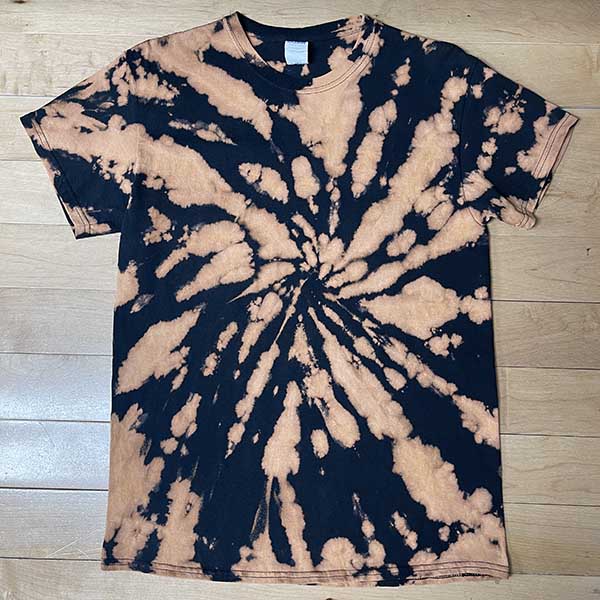Quilting t-shirts is a creative way to preserve memories and transform old garments into functional and sentimental keepsakes. Whether you want to create a quilt from old concert tees, sports jerseys, or favorite shirts, this guide will walk you through the entire process. From selecting the right t-shirts to finishing your quilt, you’ll learn everything you need to turn those cherished pieces into a beautiful quilted masterpiece.
Contents
Choosing the Right T-Shirts
1. Selecting T-Shirts
Start by selecting the t-shirts you want to use for your quilt. Choose shirts that hold sentimental value or that you find visually appealing. Consider factors such as the fabric’s condition, color scheme, and overall design. Ensure that the shirts are clean and in good shape before starting the quilting process.
2. Prepping T-Shirts
Before cutting the t-shirts, wash and dry them to prevent any future shrinking. Remove any logos or designs from the shirts that you don’t want to include in the quilt. Iron the shirts to remove wrinkles, making it easier to cut and sew.
Preparing the T-Shirts for Quilting
1. Cutting the T-Shirts
Decide on the size of each t-shirt block for your quilt. A common size for blocks is 12×12 inches, but you can adjust based on your design preference. Use a rotary cutter, cutting mat, and ruler to cut the t-shirts into squares or rectangles. Ensure that each block has a consistent size for a cohesive quilt.

2. Stabilizing the Fabric
T-shirt fabric can be stretchy and may not hold its shape well when cut. To stabilize the fabric, use fusible interfacing. Cut the interfacing slightly smaller than your t-shirt blocks and press it onto the back of each block according to the manufacturer’s instructions. This step will help prevent stretching and distortion during quilting.
Designing Your Quilt
1. Arranging the Blocks
Lay out your t-shirt blocks on a flat surface or design wall to experiment with different arrangements. Consider the color and design of each block to create a balanced and visually appealing layout. Take a photo of your arrangement to refer to as you sew the blocks together.
2. Adding Borders and Sashing
To enhance the design, you may add borders or sashing between the blocks. Borders are strips of fabric that frame the quilt, while sashing is the fabric placed between blocks. Choose fabrics that complement the t-shirts and add contrast to highlight the designs.
Sewing the Quilt
1. Assembling the Blocks
Begin by sewing the t-shirt blocks together. Use a ¼-inch seam allowance and sew the blocks in rows. Press the seams open to reduce bulk and ensure the quilt lays flat. Once all rows are completed, sew them together to form the quilt top.
2. Adding the Quilt Backing
Choose a backing fabric that complements your t-shirt quilt. Cut the backing fabric to the same size as the quilt top and lay it on a flat surface. Place the quilt top on top of the backing fabric, ensuring it is centered and smooth. Pin or baste the layers together to keep them in place.
3. Quilting the Layers
To quilt the layers together, you can use a sewing machine or hand-quilt. For machine quilting, use a walking foot or free-motion foot to stitch through all layers. Quilting can be done in straight lines, diagonal patterns, or free-motion designs, depending on your preference. For hand-quilting, use a needle and thread to stitch through the layers in a desired pattern.
Binding the Quilt
1. Preparing the Binding
Binding is the fabric that finishes the edges of your quilt. Cut strips of fabric for the binding, typically 2½ inches wide. Sew the strips together end-to-end to create one long strip, then fold it in half lengthwise and press.

2. Attaching the Binding
Attach the binding to the quilt by sewing it to the edges of the quilt top. Fold the binding over to the back of the quilt and hand-stitch it in place for a clean finish. Make sure to miter the corners for a professional look.
Caring for Your T-Shirt Quilt
1. Washing and Drying
To maintain the quilt’s appearance, wash it gently in cold water on a delicate cycle. Avoid using bleach or harsh detergents. Dry the quilt on a low heat setting or air dry to prevent shrinking and preserve the fabric.
2. Storage
When not in use, store your quilt in a cool, dry place. Avoid direct sunlight to prevent fading. You can fold the quilt neatly or store it in a breathable fabric bag to protect it from dust and damage.
Advanced T-Shirt Quilting Techniques
1. Incorporating Appliqué
Appliqué is a technique where fabric shapes are sewn onto the quilt top, adding a decorative element. You can use appliqué to add extra design features to your t-shirt quilt, such as shapes, initials, or other motifs. Cut out shapes from fabric and sew them onto the quilt blocks before assembling the quilt top.
2. Using Embroidery
Adding embroidery can enhance the visual appeal of your t-shirt quilt. Embroider names, dates, or personal messages onto the t-shirt blocks or quilt top. Use embroidery floss or thread in contrasting colors to make the details stand out. This technique adds a personalized touch and elevates the overall design.
3. Creating a T-Shirt Quilt with Mixed Media
For a unique look, consider combining t-shirt fabric with other materials like denim, flannel, or cotton prints. Mixing different fabrics can add texture and visual interest to your quilt. Ensure all materials are compatible in terms of weight and care instructions to avoid issues with shrinkage or stretching.
Troubleshooting Common Issues
1. Dealing with Stretchy Fabric
If your t-shirt blocks are stretching or warping, use stabilizer or interfacing to reinforce the fabric. Avoid pulling or tugging on the fabric while sewing. Adjust your sewing machine tension if necessary and use a walking foot to manage the layers more effectively.
2. Fixing Uneven Seams
Uneven seams can occur if the blocks are not cut precisely or if the sewing machine settings are off. To fix this, use a seam ripper to carefully remove the stitches and resew the seams. Press the seams flat to ensure they align properly. Consider using a sewing guide or ruler to keep your seams straight.
3. Correcting Fabric Bleeding
Fabric bleeding happens when colors run or transfer onto other fabrics. To prevent this, wash and pre-treat your t-shirts before quilting. If bleeding occurs, use a color remover designed for fabric and wash the quilt according to care instructions.
Customizing Your Quilt
1. Adding Personal Touches
Personalize your quilt by incorporating unique elements such as family photos printed on fabric or special symbols that represent significant events or hobbies. These additions make the quilt even more meaningful and tailored to the recipient or occasion.

2. Designing with Patterns
Experiment with different quilting patterns to enhance the design of your quilt. Patterns such as stitch-in-the-ditch, echo quilting, or free-motion quilting can add depth and texture to your quilt. Choose a pattern that complements the t-shirt designs and enhances the overall look.
3. Creating a Quilt Layout Plan
Before cutting and assembling, create a detailed layout plan for your quilt. Sketch your design or use digital tools to visualize how the blocks will be arranged. This plan helps ensure that the finished quilt meets your design goals and helps prevent mistakes during assembly.
Conclusion
Quilting t-shirts is a rewarding project that allows you to create a meaningful and practical item from old garments. By following these steps—from selecting and preparing your t-shirts to designing and sewing the quilt—you can craft a unique piece that celebrates your memories and personal style. With proper care, your t-shirt quilt will be a cherished keepsake for years to come.



